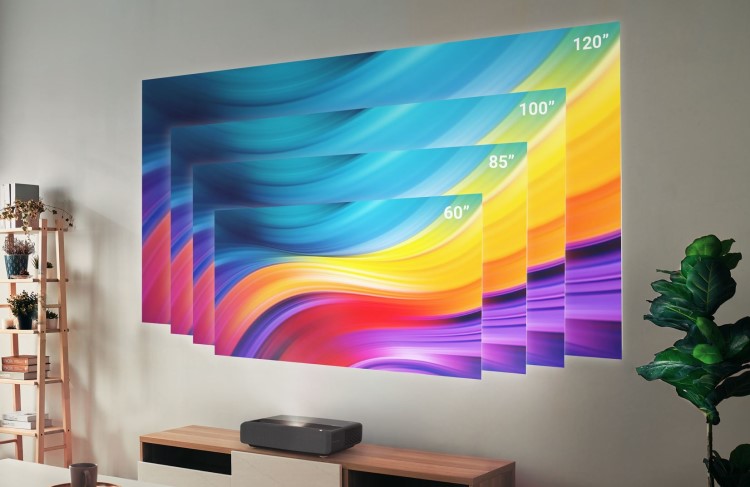With the Cricket world cup being all that’s buzzing right now, people love going to stadiums but if you dislike being in large open spaces with thousands of other people, then you have to find the best alternative i.e project the match and watch it with your loved ones in a cozy space. Well that’s where short throw projectors come in.
A home projector with an ultra-short throw that aims to replace your television is the Optoma L1+. It is lightweight, tiny, and requires no more area than a modest TV set for the living room. To configure it, simply connect it to a power supply and a content source. Although the L1+ comes with its own Android dongle that allows you to access content, the review unit was not included. Customers must purchase this individually as well, however it may not be necessary given that the majority of us already own an Amazon Fire TV dongle at home.
Design and Setup
Optomo is really big on design, they’ve made the L1+ in such a way that would fit right into modern home decor. Whether it’s the colour selection, the materials used or even the fit and finish. Top notch quality.
As with most modern projectors, setup is simple. If you’re not happy with the image, you may easily adjust the focus settings to acquire the desired result. There are no physical buttons on this gadget, thus the remote is incredibly helpful for whatever you want to accomplish here. For connectivity, there are three HDMI ports, one S/PDIF port, and an audio out port.
Speakers
Better speakers than most televisions are a feature of Optoma projectors, which is helpful. Additionally, projectors have advanced significantly in this area over time. A few years ago, people had to utilise an additional computer speaker system for projectors. Or even purchase a soundbar for it.
The Optoma L1+ comes with so many settings inside that you can get every aspect of the projection exactly as you want it. I liked the ability to adjust the digital zoom. Also, you can change aspect ratio to a wide angle mode, too, if you have access to such content.
Performance
The Optoma L1+ has great specs on paper with DLP 8K UHD that packs 8.3 million pixels on screen and enables HDR, low lag gaming mode with 240Hz smooth motion and 3D. All of this translates to stunning viewing on the wall, even when it is daytime. Yes, this is among the best-performing projectors I have used during the day, and that means this is an actual TV replacement if you are considering it.
The Optoma L1+ comes with so many settings inside that you can get every aspect of the projection exactly as you want it. I liked the ability to adjust the digital zoom. Also, you can change aspect ratio to a wide angle mode, too, if you have access to such content.
Verdict
The Optoma L1+ at Rs 2,80,000 lakh, may be too costly for many people to contemplate replacing their television, especially considering that the greatest TVs are still just half as expensive. However, this is undoubtedly one of the easiest and finest solutions available if you are designing a space just for your entertainment needs. Offices and educational institutions may also think about using this as a backup option because of its versatility. If you are very picky about the design of the spaces around you, the L1+ will cater to your aesthetic needs fully.
